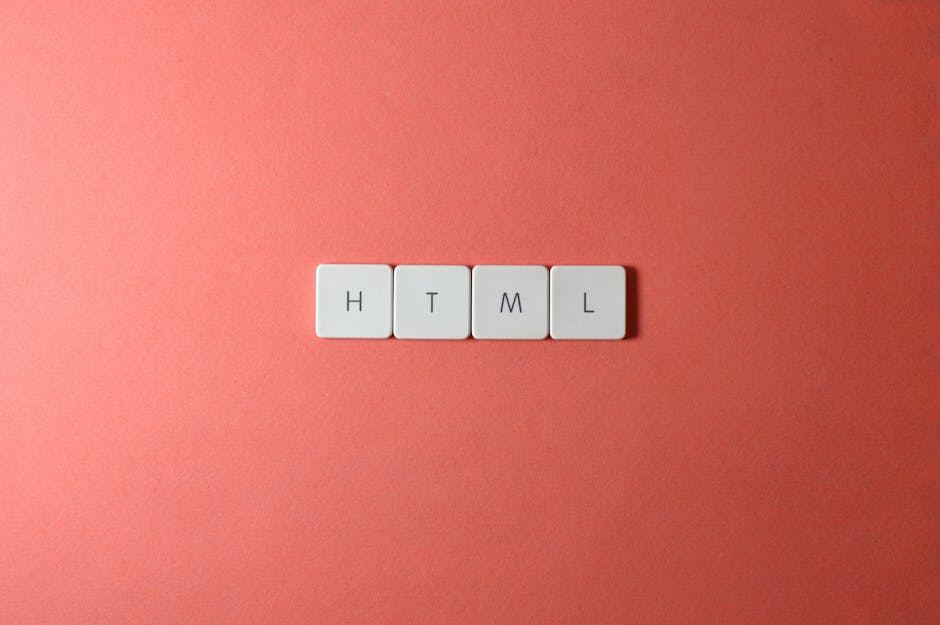 html
html
E-commerce scraping How I track prices
Why E-commerce Scraping Matters
Imagine you're trying to find the best deal on a new gadget. You probably bounce between a few different websites, checking prices, specs, and availability. Now, imagine doing that for hundreds, or even thousands, of products. That’s where e-commerce scraping comes in. It's the process of automatically extracting data from e-commerce websites, saving you time and giving you a competitive edge. We use it for price tracking, product detail monitoring, competitor research, and lots more.
E-commerce scraping isn't just about saving time. It's about gaining valuable ecommerce insights. Think about it: access to a vast sea of constantly updated product information, prices, customer reviews, and other vital data can revolutionize your business strategy.
What Can You Scrape? The Possibilities
The beauty of e-commerce scraping lies in its versatility. Pretty much any publicly available information on an e-commerce website is fair game (within legal and ethical boundaries, of course). Here are some examples:
- Price Tracking: Monitor price fluctuations over time to identify trends, optimize pricing strategies, and snag the best deals. This is really valuable for sales forecasting.
- Product Details: Extract product names, descriptions, specifications, images, and customer reviews. You can also use scraping to maintain inventory management.
- Availability: Track stock levels to identify popular items, anticipate shortages, and avoid out-of-stock situations.
- Catalog Clean-ups: Ensure your own product catalog is accurate and up-to-date.
- Deal Alerts: Get notified of special offers, discounts, and promotions.
- Competitor Analysis: Analyze your competitors' product offerings, pricing, and marketing strategies. This provides crucial competitive intelligence.
- Customer Reviews: Collect and analyze customer reviews to understand customer sentiment and identify areas for improvement. This can be combined with sentiment analysis techniques to get a clearer picture of customer perception.
Getting Started: A Simple Step-by-Step Guide
Let's dive into a simple example of how to scrape product prices using Python. We'll use the requests library to fetch the HTML content of a webpage and then manually parse it. Remember, this is a very basic example, and for more complex scraping tasks, you'll likely need a more robust tool like Scrapy tutorial or BeautifulSoup. Also, be aware that many websites use anti-scraping techniques, so your code may need to be adjusted accordingly.
Important Note: This example is for educational purposes only. Always respect the website's robots.txt file and terms of service before scraping. Is web scraping legal? Yes, but there are ethical and legal guidelines that must be followed.
- Install the
requestslibrary: Open your terminal or command prompt and run:pip install requests - Inspect the webpage: Open the webpage you want to scrape in your browser (e.g., Chrome). Right-click on the product price and select "Inspect" or "Inspect Element." This will open the browser's developer tools, allowing you to see the HTML structure.
- Identify the HTML element containing the price: Look for the HTML tag and attributes that uniquely identify the price element. For example, it might be within a
tag with a specific class name likepriceorproduct-price. - Write the Python code: Use the
requestslibrary to fetch the HTML content and then use string manipulation to extract the price.
import requests
def scrape_price(url):
try:
response = requests.get(url)
response.raise_for_status() # Raise an exception for bad status codes
html_content = response.text
# **IMPORTANT: This is a simplified example. You'll need to adapt
# this part based on the specific HTML structure of the website
# you're scraping. Inspect the HTML source code to find the correct
# tag and attributes.**
# Example: Assuming the price is in a span tag with class "price"
start_index = html_content.find('')
if start_index == -1:
print("Price element not found.")
return None
start_index += len('')
end_index = html_content.find('', start_index)
if end_index == -1:
print("Closing span tag not found.")
return None
price = html_content[start_index:end_index].strip()
return price
except requests.exceptions.RequestException as e:
print(f"An error occurred: {e}")
return None
# Replace with the URL of the product you want to scrape
product_url = "https://www.example.com/product/123"
price = scrape_price(product_url)
if price:
print(f"The price is: {price}")
Important Disclaimer: This is a very simplified example and won't work for every website. Modern e-commerce websites often use JavaScript to dynamically load content, which means the HTML you get from requests might not contain the price. For those cases, you'll need more advanced techniques like using Selenium or Puppeteer to render the JavaScript and get the fully loaded HTML.
Also, remember that websites change their HTML structure frequently. Therefore, you will need to keep your scraper up to date with the latest HTML. This can be challenging.
Beyond the Basics: Advanced Web Scraping Techniques
While our simple example demonstrates the core concept of web scraping, real-world e-commerce scraping often requires more sophisticated techniques. Here are some advanced concepts you might encounter:
- Handling Dynamic Content: Websites that use JavaScript to load content require tools like Selenium or Puppeteer to render the page before scraping.
- Pagination: Scraping product listings that span multiple pages requires handling pagination logic to navigate through all the pages.
- Anti-Scraping Measures: Many websites employ anti-scraping techniques to prevent bots from accessing their data. You might need to use techniques like rotating proxies, user-agent spoofing, and CAPTCHA solving to bypass these measures.
- Data Cleaning and Transformation: The scraped data often needs to be cleaned and transformed into a usable format. This might involve removing irrelevant characters, converting data types, and standardizing formats.
- Rate Limiting: Avoid overloading the website's server by implementing rate limiting, which limits the number of requests you send per unit of time.
Choosing the Right Tools
Several tools are available for e-commerce scraping, each with its strengths and weaknesses. Here are a few popular options:
- Python Web Scraping: Python is the best web scraping language due to its extensive libraries and frameworks. Libraries like
requests, BeautifulSoup, and Scrapy provide powerful tools for web scraping. Scrapy is a powerful framework designed for large-scale scraping projects. - Beautiful Soup: A Python library for parsing HTML and XML. It's easy to use and well-suited for simple scraping tasks.
- Scrapy: A powerful Python framework for building scalable web crawlers. It provides features like automatic request scheduling, data extraction, and data storage.
- Selenium: A web automation tool that can be used to scrape dynamic websites. It allows you to control a web browser programmatically.
- Puppeteer: A Node.js library that provides a high-level API for controlling headless Chrome or Chromium. It's well-suited for scraping dynamic websites and generating screenshots.
- Web Scraping Tools: Various web scraping tools are available, often offering user-friendly interfaces and pre-built templates for common scraping tasks.
Ethical and Legal Considerations
It's crucial to approach web scraping ethically and legally. Here are some key considerations:
- Robots.txt: Always check the website's
robots.txtfile, which specifies which parts of the website are allowed to be scraped. - Terms of Service: Review the website's terms of service (ToS) to ensure that scraping is permitted. Many websites explicitly prohibit scraping.
- Respect Website Resources: Avoid overloading the website's server by implementing rate limiting and respecting the website's request limits.
- Data Privacy: Be mindful of personal data and comply with relevant privacy regulations, such as GDPR and CCPA.
Remember, just because you can scrape data doesn't mean you should. Always prioritize ethical considerations and respect the website's policies. The question of is web scraping legal is dependent on you following the rules of each specific website you're targeting.
How to Use Scraped Data
Once you've scraped the data, the real magic begins. Here are some examples of how you can use it to make better decisions:
- Price Optimization: Analyze competitor pricing to optimize your own pricing strategies and maximize profits.
- Product Development: Identify unmet customer needs and opportunities for new product development by analyzing customer reviews and feedback.
- Lead Generation: Scrape contact information from relevant websites for lead generation data and sales outreach.
- Market Research: Gain insights into market trends and consumer behavior by analyzing product data and customer reviews.
- Content Creation: Create engaging content based on popular products and customer interests.
- Sentiment Analysis: Analyze customer reviews to gauge customer sentiment and identify areas for improvement.
Is Scraping Everything Always the Answer?
While web scraping offers significant advantages, it's important to consider alternatives. Sometimes, using an API (Application Programming Interface) is a better option. APIs provide structured data in a standardized format, making it easier to integrate with your systems. Many e-commerce platforms offer APIs for accessing product data, order information, and customer data.
However, if an API isn't available or doesn't provide the data you need, web scraping can be a valuable alternative. Also, consider using a managed data extraction service. This allows you to offload the technical aspects of scraping to experts.
A Quick Checklist Before You Start
Before you embark on your e-commerce scraping journey, here's a handy checklist to ensure you're on the right track:
- [ ] Define your goals: What data do you need, and what will you do with it?
- [ ] Identify your target websites: Which websites contain the data you need?
- [ ] Review the robots.txt file and terms of service: Ensure that scraping is permitted.
- [ ] Choose the right tools: Select the appropriate libraries, frameworks, or tools for your scraping task.
- [ ] Design your scraper: Plan the structure of your scraper, including how to handle pagination, dynamic content, and anti-scraping measures.
- [ ] Implement rate limiting: Avoid overloading the website's server.
- [ ] Test your scraper: Thoroughly test your scraper to ensure that it's extracting the correct data and handling errors gracefully.
- [ ] Monitor your scraper: Continuously monitor your scraper to ensure that it's working correctly and adapt to changes in the website's structure.
Twitter data scraper tools are also popular for sentiment analysis of social media comments.
Ready to unlock the power of e-commerce data?
E-commerce scraping offers incredible opportunities for businesses of all sizes. By following the guidelines outlined in this guide and utilizing the right tools and techniques, you can harness the power of e-commerce data to gain a competitive edge and drive growth.
Ready to take your data strategy to the next level? Start tracking prices, analyzing competitors, and gaining valuable ecommerce insights today! Get started now.
Sign upinfo@justmetrically.com
#EcommerceScraping #WebScraping #DataExtraction #PriceTracking #CompetitiveIntelligence #PythonScraping #EcommerceInsights #DataAnalysis #Scrapy #WebCrawler

